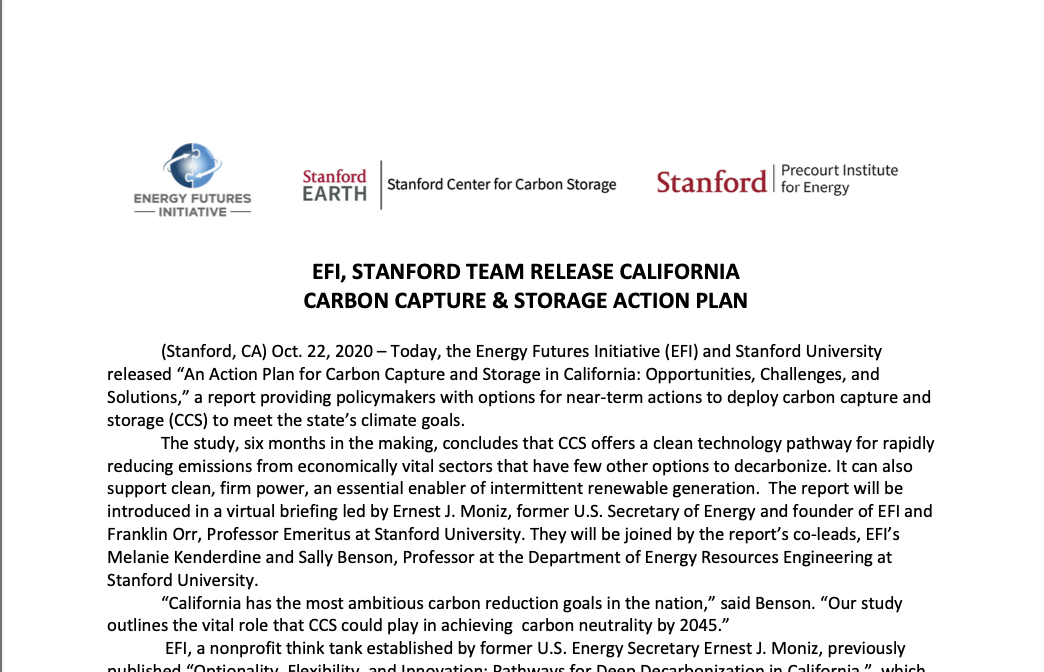An Action Plan for Carbon Capture and Storage in California: Opportunities, Challenges, and Solutions (October 2020) is an Energy Futures Initiative (EFI) report providing policymakers with options for near-term actions to deploy carbon capture and storage (CCS) to meet the state’s climate goals. This analysis builds on previous work, including EFI’s 2019 report “Optionality, Flexibility, and Innovation: Pathways for Deep Decarbonization in California,” which concluded that the targeted use of CCS could be one of the largest single contributors to California’s decarbonization by 2030.
California has experienced the catastrophic impacts of climate change for years and has some of the strongest decarbonization targets in the country. Its economy would be the fifth largest in the world as a stand-alone entity, so the state’s success in meeting its emissions targets has significant implications for the global climate solutions.
CCS is a relatively mature clean energy technology capturing point-source emissions. It offers a clean technology pathway to help California reach its near-term emissions reduction goals and transition to a net-zero emissions economy, particularly in high-emitting economic sectors that are difficult to decarbonize.
The team examined findings that propose CCS and carbon dioxide removal as essential strategies for California’s emission reduction and decarbonization goals. The team estimated that CCS could abate nearly 60 megatons of carbon dioxide per year and that California’s geology makes it well suited for safe, permanent storage of up to 70 gigatons of carbon. Further, the study identifies 76 facilities suitable for carbon capture.
The study also identified that CCS enables new industries, including hydrogen production and direct air capture. Both industries are important for carbon dioxide removal and would potentially rely on geologic storage and efficiently take advantage of CCS carbon dioxide pipeline infrastructure. Alongside its other roles, hydrogen could critically serve as a clean firm generation option, further decarbonizing the power sector. EFI noted that a CCS industry in California could also produce economic and health benefits, including jobs for skillsets that may otherwise become obsolete, improving local air quality, and positioning California as a global leader in CCS development and deployment.
As of the report’s publication, there were no operational CCS projects in California state due to challenges that included relatively new and CCS-specific planning and permitting requirements, heavy reliance on policy incentives, and varying public understanding and support that potentially impacted developer and investor interest. In accordance with these challenges, EFI recommended policy actions to maximize the value of CCS for meeting California’s economywide decarbonization goals. These actions include affirming state support for CCS in meeting emissions targets, improving and coordinating CCS permitting processes, issuing policy guidance to clarify CCS eligibility, incorporating CCS protocol into the cap-and-trade program, and supporting CCS innovation at California research institutions and laboratories.
The report was released during a virtual event featuring the EFI research team and Stanford collaborators. The event and report attracted media attention from S&P Global, Forbes, Water Power Magazine, Phys Org, Utility Dive, Stanford Energy, and Rethink Research.
Supplemental Material
Related Content
(Share this post with others.)











